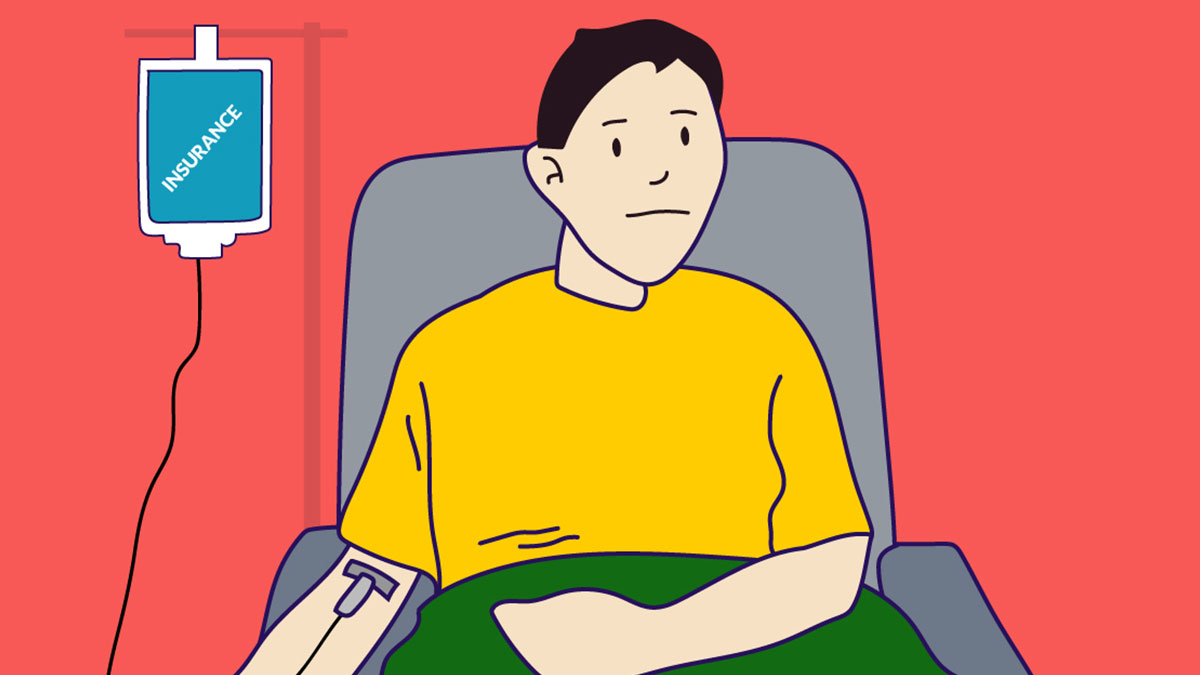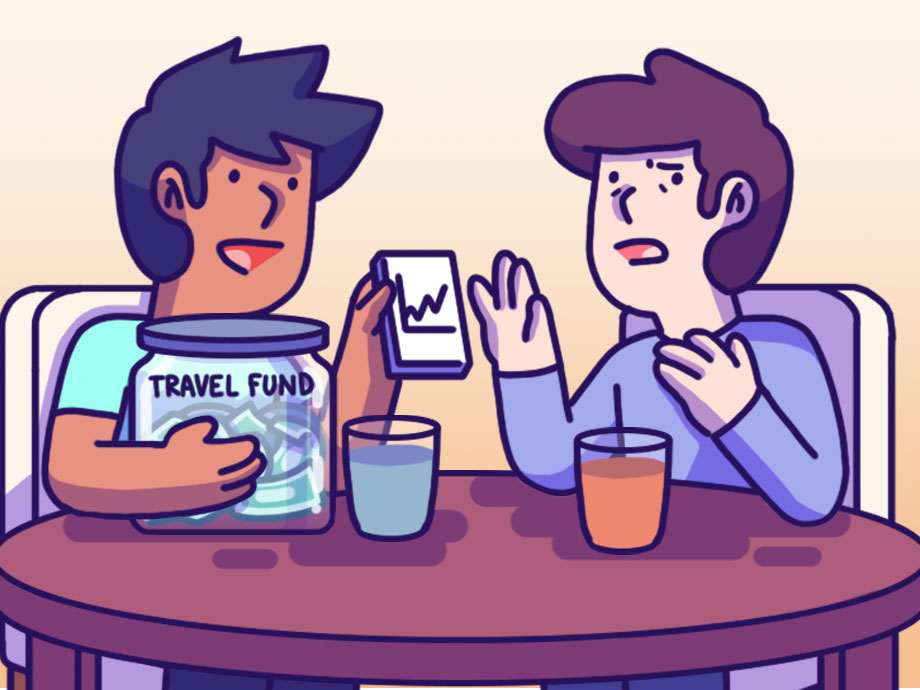Financial Planning | Personal Finance | Article
Do We Really Need Early Critical Illness Plans?
by Sophia | 17 Sep 2019 | 7 mins read

Imagine being diagnosed with an early stage of cancer; living in the limbo of still being able and functioning – as the illness is in its infancy – yet you have to face your mortality. Now compound that with the need to still go to work to see your boss’s face.
Such is life, it goes on, even though you have to consider that yours might not.
Won’t it be nice to be able to stay at home and recuperate, or heck, get a big payout so you can tick something off that bucket list?
Well, this is where early critical illness (ECI) coverage comes in. Which provides a payout in the event of early stages of a critical illness.
What are critical illnesses?
Before getting into the nitty-gritty of ECI plans, we should first understand what constitutes a critical illness. There are 37 severe-stage illnesses listed down by the Life Insurance Association, which can be viewed here.
The most common critical illnesses in Singapore are heart complications (such as strokes, heart attacks) and of course, cancer – the top mortality cause in Singapore at 29%.
Because of this, we will use cancer as the main dread disease reference in this article.
What is critical illness insurance, and why might we need ECI?
Cancer survival rates vary widely, depending on when cancer is detected. Stage 1 diagnosis sees a high 87.6% to 99% survival rate. But lowers to a fifty-fifty chance or less when diagnosed at stage 4.
Older critical illness (CI) plans or riders offer lump-sum payouts to people who are diagnosed with late-stage illnesses, such as stage 3 and 4. The criticism of older critical illness plans is that payouts should kick in earlier when recovery is more likely.
This is where ECI coverage comes in to fill the gap.
Different forms of ECI plans
As with critical illness plans, ECI plans come in the form of standalone plans and riders. There are also multipay plans for people to choose from, which combines early and late-stage critical illness insurance.
Here are some quick definitions of the various ECI options and how much these premiums will roughly cost:
Standalone ECI
Standalone ECI plans offer one lump-sum payout upon diagnosis and the policy terminates. For reference sake, Aviva’s MyEarly Critical Illness plan costs a 35 year old $155.7 per month for a sum assured of $200,000.
Multipay ECI
One step up from regular, standalone ECI plans, multipay plans provide more than one lump sum payout to the insured. This means that if one is diagnosed with diabetes complications at 30 and later is struck with bone marrow cancer at 45, there will be a payout each time given to the insured.
Compared to standalone ECI plans, multipay plans have smaller sums assured per dollar, but can potentially pay out more in total due to multiple payouts as a result of combining CI and ECI benefits.
At $114 a month (Aviva), a 30-year-old male can have a sum assured that ranges between $100,000 to $600,000 – the maximum is if you win the critical illness lottery five times.
These plans can be complicated because each of the five claims requires specific criteria to be met, for example:
- Claim 1 & 2 – Two different early critical illnesses
- Claim 3 – One severe critical illness
- Claim 4 & 5 -Cancer relapses OR Late stage cancer.
There are also additional T&Cs to adhere to, most pertinently, a period between claims that can run from one to two years. This waiting period differs between insurers.
So to full “maximise” the policy benefit, one would require one to at least suffer:
- Two early diagnoses of cancers
- One cancer moves to a severe stage- which requires a full organ removal (if any)
- Two severe cancers – diagnosed as the uncontrolled growth of malignant cancer cells – two years later from a prior severe cancer claim OR early diagnosis claim (if any)
In summary: You have to be super unlucky.
However, the main benefit of these plans is that you are still covered for critical illnesses after stricken, compared to standalone plans which will expire once the benefit has been paid, leaving you in a tight spot if you want to get re-insured for critical illness coverage.
ECI Riders
Riders are, as we know, add-ons to existing insurance coverage, such as life insurance. These are generally cheaper than having a standalone plan.
However, the drawback of riders is that they are stuck with your main plan. This offers less flexibility, as the sum assured and duration of the rider will be capped to the main insurance policy. If the main insurance expires, so will the rider.
Accelerated rider for term life insurance
This is an alternative type of rider that offers ECI benefits, in that a lump sum payout is given upon diagnosis. However, the difference is that it accelerates the death benefit in the event of critical illness diagnoses.
For example, if one’s term life insurance offers a lump sum payout of $1,000,000 with an accelerated rider providing $500,000 in coverage, it means that if a person is diagnosed with an early critical illness, they will receive the $500,000 payout. However, their total sum assured from their term life insurance will be reduced by half because of the earlier claim.
These accelerated riders are amongst the cheapest options – but at the cost of sharing the sum assured between two policies.
Why are they so expensive?
Part of the reason why ECI plan premiums are high is that critical illness rates are relatively high. 1-in-5 Singaporeans are estimated to get cancer, just one type of the 37 illnesses typically covered by critical illness insurance.
Advances in medical care have led to better (and earlier) diagnosis and longer lifespans, increasing the chances of an individual receiving a critical illness, or even multiple diagnoses in their lifetimes.
All these add to high chances of ECI claims, which requires premiums to surge to sustain the policy pool and profit of the insurers.
How much coverage do I need?
A rule of thumb for critical illness plans is to factor in four to five years for recovery and treatment (based on the Life Insurance Association’s study, this is the typical length for life expectancy after diagnosis) – so a plan that offers a sum assured that’s four to five times one’s income or expenses is generally recommended by insurers.
For early critical illness, however, it’s recommended to find a plan that offers a payout about twice the amount of one’s annual income to afford early treatment options for a smooth recovery. It’s important not to be over-insured, even if it’s a matter of life or death.
Take note
It’s worth mentioning that regular health insurance plans already cover hospitalisation bills and medical treatment for critical illness treatment such as radiotherapy and chemotherapy.
Instead, CI and ECI plans serve as an income replacement, that comes in handy if you choose not to work during recovery. It is a nice luxury, if one can afford the premiums.
With that in mind, it might not be a necessity to sign up for an early critical illness plan, as people do still return to work and can still be active during the early stage of cancer.
Worth it?
We have, in another article, (if you are young enough to enjoy the years of compounding returns) examined self-insuring: investing the premiums paid instead of paying them to an insurance company, generating your own sum assured. Effectively, you are your own insurance and can enjoy the “payout” even if you do not fall ill.
But this only works as long as you invest properly and diligently, of course.
However, if you are an outlier, and fall critically ill at a younger than average age (generally, age 60 onwards sees the highest likelihood of developing a critical illness). ECI plans undoubtedly provide the best protection.
Updated to correct waiting period between claims under multipay mechanics.
















